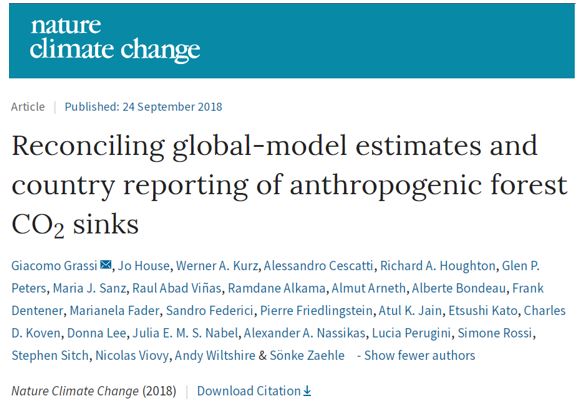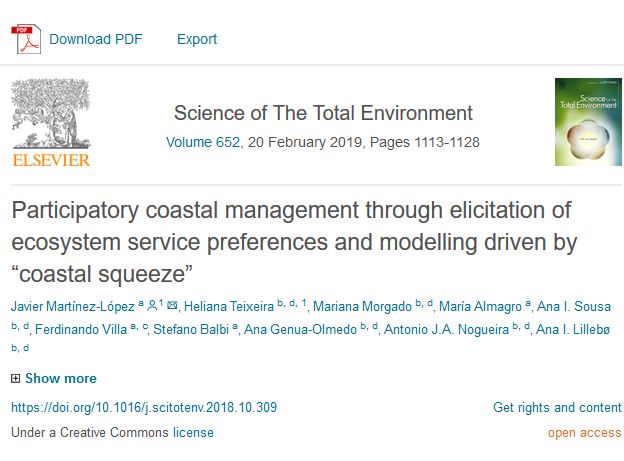September 26, 2018
Published by BC3Research at September 26, 2018
Achieving the long-term temperature goal of the Paris Agreement requires forest-based mitigation. Collective progress towards this goal will be assessed by the Paris Agreement’s Global stocktake. At present, there is a discrepancy of about 4 GtCO2 yr−1 in global anthropogenic net land-use emissions between global models (reflected in IPCC assessment reports) and aggregated national GHG inventories (under the UNFCCC). We show that a substantial part of this discrepancy (about 3.2 GtCO2 yr−1) can be explained by conceptual differences in anthropogenic forest sink estimation, related to the representation of environmental change impacts and the areas considered as managed.
October 4, 2018
Published by BC3Research at October 4, 2018
Scientists, stakeholders and decision makers face trade-offs between adopting simple or complex approaches when modeling ecosystem services (ES). Complex approaches may be time- and data-intensive, making them more challenging to implement and difficult to scale, but can produce more accurate and locally specific results. In contrast, simple approaches allow for faster assessments but may sacrifice accuracy and credibility. The ARtificial Intelligence for Ecosystem Services (ARIES) modeling platform has endeavored to provide a spectrum of simple to complex ES models that are readily accessible to a broad range of users
November 20, 2018
Published by BC3Research Javier Martínez López Maria Almagro Ferdinando Villa Stefano Balbi at November 20, 2018
Categories
The Baixo Vouga Lagunar (BVL) is part of Ria de Aveiro coastal lagoon in Portugal, which is classified as a Special Protection Area under the European Habitats and Birds Directives. This part of the system, corresponding to the confluence of the Vouga River with the lagoon, is very important culturally and socioeconomically for the local communities, taking place several human activities, especially agriculture.
November 20, 2018
Published by BC3Research Javier Martínez López Stefano Balbi Ferdinando Villa at November 20, 2018
Categories
Green and Blue Infrastructure (GBI) is a network designed and planned to deliver a wide range of ecosystem services and to protect biodiversity. Existing GBI designs lacked a systematic method to allocate restoration zones. This study proposes a novel approach for systematically selecting cost-effective areas for restoration on the basis of biodiversity, ecosystem services, and ecosystem condition to give an optimal spatial design of GBI.




